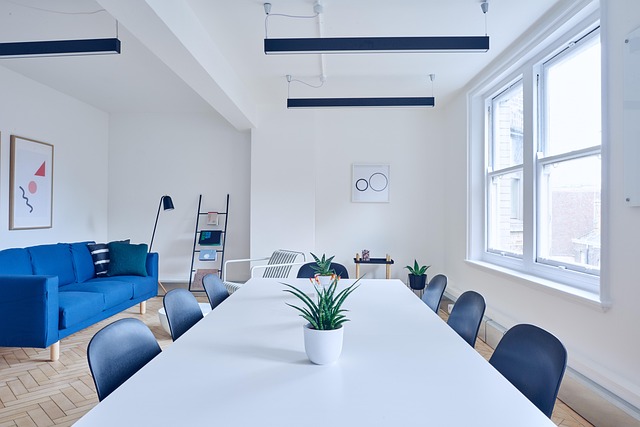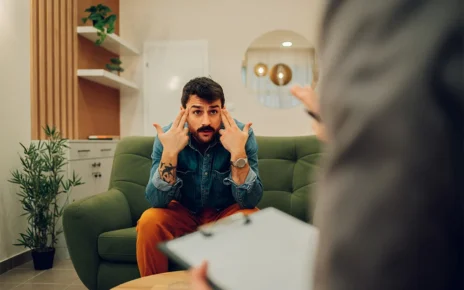A cluttered or poorly designed workspace doesn’t just affect productivity, it impacts mental clarity and overall well-being. Research consistently shows that the physical environment can influence focus, creativity, and stress levels. At Worksation Business Centre, companies are discovering how thoughtful workspace design can be a game-changer, helping teams think more clearly, work efficiently, and feel motivated throughout the day.
Workspace design is more than aesthetics; it’s a strategic tool for cognitive performance. From natural light and ergonomic furniture to carefully designed layouts and quiet zones, each element contributes to mental clarity and employee satisfaction. This blog explores the hidden link between workspace design and mental clarity, supported by research, statistics, and actionable strategies for modern offices.
How Workspace Design Shapes Mental Clarity
The environment where we work has a profound impact on how our brains process information. Poorly organized or uninspiring spaces can lead to mental fatigue, distraction, and reduced focus, while well-designed workspaces enhance concentration and creativity.
At coworking spaces, this principle is fully realized. Thoughtfully planned layouts, ergonomic desks, and quiet zones allow employees to perform high-focus tasks with minimal stress while still enjoying collaborative opportunities when needed.
The Science of Environmental Psychology
Environmental psychology studies the interplay between people and their surroundings. According to a 2022 study by the Journal of Environmental Psychology, “employees in well-designed workspaces report 33% higher mental clarity and focus” compared to those in cluttered or poorly lit offices.

Key elements influencing mental clarity include:
Natural light: Enhances alertness and mood
Ergonomic furniture: Reduces physical strain and cognitive distraction
Acoustic design: Minimizes disruptive noise for sustained focus
Organized layouts: Encourage smooth movement and workflow
These factors combine to reduce cognitive overload and help employees think clearly, make better decisions, and manage tasks more efficiently.
Lighting and Its Cognitive Impact
Lighting is one of the most critical, yet often overlooked, elements of workspace design. Natural light improves mood and concentration, while poor lighting can lead to fatigue and eye strain.
A 2023 WELL Building Institute study found that “workers exposed to natural daylight reported 23% higher productivity” and “17% better cognitive function” than those in artificially lit spaces. Incorporating large windows, light-diffusing panels, and open layouts can significantly boost mental clarity.
The Role of Quiet Zones
Noise is a major disruptor of mental focus. According to a 2024 Microsoft survey, “61% of employees” stated that noise in open offices negatively affects their concentration. Providing soundproof areas or quiet zones allows employees to complete high-focus tasks without interruption.
By integrating quiet zones, coworking spaces, and private offices, companies can create environments that respect individual cognitive needs while maintaining collaborative opportunities.
Color, Aesthetics, and Cognitive Performance
Workspace aesthetics influence mood, creativity, and stress. Colors, textures, and spatial arrangements can either energize or drain mental resources. Studies show that blue and green tones enhance creativity and calmness, while cluttered or overly bright environments increase cognitive load and stress.
Worksation Business Centre uses design strategies that balance visual stimulation with serenity, combining professional aesthetics with cognitive-friendly environments for maximum mental clarity.
Designing Workspaces for Focus and Creativity
Modern workspace design prioritizes flexibility, comfort, and accessibility. By aligning design with human cognitive needs, offices can support both productivity and well-being.
Flexible Layouts
Flexibility allows employees to choose the workspace that suits their task. Open collaborative zones, private offices, and quiet corners offer choices for both focused work and team interactions. According to a 2023 Global Workspace Survey, “67% of employees” reported higher satisfaction when they could select their preferred workspace layout.
Ergonomics and Physical Comfort
Physical comfort directly impacts mental clarity. Ergonomic chairs, height-adjustable desks, and monitor setups reduce strain and fatigue, allowing employees to focus better on cognitive tasks. Harvard Health Research (2022) found that ergonomic interventions led to “21% fewer musculoskeletal complaints” and “improved cognitive alertness.”
Biophilic Design
Biophilic design, which incorporates natural elements like plants, wood textures, and natural light, improves mental clarity by reducing stress and improving mood. Studies show that offices with greenery and natural elements reduce employee stress by “37%” and increase creativity scores by “15%” (Human Spaces Report, 2023).
Technology Integration for Cognitive Ease
Technology enhances workspace design when it reduces friction and supports mental focus. Tools such as smart lighting, noise-canceling systems, and digital booking platforms allow employees to control their environment, improving attention and reducing cognitive fatigue.

At Worksation Business Centre, coworking areas and private offices are integrated with these technologies to ensure employees can work in spaces optimized for focus and creativity.
Balancing Collaboration and Focus
Workspace design is most effective when it balances collaborative and focus-oriented areas. Employees can brainstorm in open zones and then retreat to quiet spaces for deep work. This intentional separation supports mental clarity and overall performance.
According to a 2024 Future Workplace report, “teams with access to both collaborative and quiet work areas were 29% more productive and 24% more creative” than those confined to open-plan spaces.
Conclusion
Workspace design is a powerful, yet often overlooked, tool for enhancing mental clarity. Thoughtful layouts, natural lighting, ergonomic furniture, acoustic solutions, and biophilic elements all contribute to reduced cognitive load, better focus, and higher creativity. Businesses that invest in design strategically create environments where employees can think clearly, perform efficiently, and feel motivated throughout the day.
In the modern office, mental clarity is not a byproduct, it is an intentional outcome of smart design. By integrating quiet zones, flexible layouts, and cognitive-friendly aesthetics, companies can maximize employee performance, satisfaction, and well-being, turning workspaces into true productivity engines.
FAQs
1. How does workspace design affect mental clarity?
Design elements like lighting, acoustics, and layout directly influence focus, mood, and cognitive performance.
2. What are the key features of a mentally clear workspace?
Here are essential features:
Natural light and proper illumination
Quiet zones or soundproof areas
Ergonomic furniture and flexible layouts
Biophilic elements like plants and natural textures
3. Can coworking spaces improve mental clarity?
Yes. Coworking spaces like those at Worksation provide thoughtfully designed zones for both collaboration and focused work, enhancing cognitive performance.
4. How important is noise control in office design?
Noise control is critical. Studies show that reducing distractions improves focus by up to “42%” and reduces stress in employees.
5. What role does biophilic design play in mental clarity?
Biophilic elements reduce stress, boost creativity, and improve overall cognitive function, creating an environment that supports clear thinking and productivity




